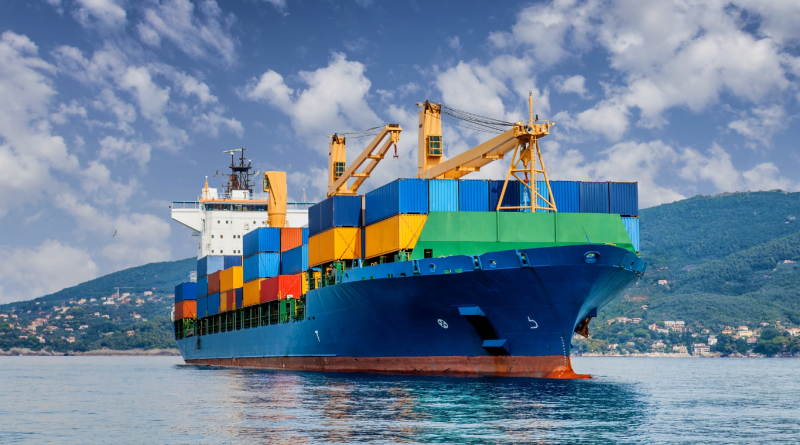Top 6 Shipping Innovations Transforming Global Logistics
The global industry, long considered conservative in adopting shipping innovations, is now at the forefront of a logistics revolution. As e-commerce expands, environmental regulations tighten, and supply chain resilience becomes a priority, innovation has become indispensable. The convergence of digital technologies, automation, and green energy is giving rise to a smarter, cleaner, and more connected maritime sector.
This article outlines six cutting-edge innovations driving transformation in shipping, each reshaping the way goods move across oceans and continents.
1. Autonomous Cargo Ships and AI-Driven Navigation
Autonomous shipping is evolving from concept to commercial reality. Vessels equipped with AI-powered navigation systems can make real-time decisions based on sensor data, satellite feeds, and machine learning algorithms. These ships operate with minimal crew or, in some cases, entirely remotely.
Key Advantages:
- Minimized human error and lower accident rates.
- Reduced crew-related operational costs.
- Optimized fuel consumption through real-time route planning.
Developments in AI also support predictive maintenance, allowing ships to identify and resolve mechanical issues before they cause delays or safety concerns. As more ports and maritime authorities adapt to these technologies, autonomous shipping is expected to grow significantly in the next five years.
2. Wind-Assisted Propulsion and Sustainable Shipping
Amid the push for decarbonization, shipping innovations is turning back to the wind, albeit with a modern twist. Technologies such as rigid sails, kite systems, and rotor sails offer sustainable propulsion alternatives.
Examples Include:
- Oceanbird’s rigid sail design can reduce emissions by 90%.
- Airseas’ kite system saves fuel by harnessing high-altitude wind.
- Norsepower’s rotor sails are already retrofitted on large cargo ships.
These innovations reduce dependency on fossil fuels and align with international climate mandates like the IMO’s 2030 carbon reduction goals. Hybrid wind-and-engine systems also provide operational flexibility in varying weather conditions.
3. 5G Connectivity and Smart Port Infrastructure
Ports are increasingly integrating 5G networks to support a new generation of smart infrastructure. High-speed, low-latency connectivity enables seamless communication between vessels, port authorities, and cargo handlers.
Infrastructure Upgrades Enabled by 5G:
- Automated cranes and remote equipment control.
- Live-streamed surveillance and real-time traffic data.
- Integration with autonomous ships and logistics hubs.
Smart ports equipped with 5G can reduce cargo handling time, enhance security, and respond more effectively to disruptions. The Freeport of Riga and Port of Rotterdam are leading examples of this transformation, investing heavily in 5G-backed systems.
4. Advanced Package Tracking with IoT and RFID
Real-time tracking is no longer a luxury but a necessity in global logistics. IoT sensors and RFID tags allow shipping firms to monitor cargo conditions, movement, and security from departure to delivery.
Key Benefits:
- Continuous data feeds on temperature, humidity, shock, and location.
- Faster customs processing due to transparent tracking histories.
- Reduced cargo theft and damage through proactive monitoring.
The integration of these technologies also supports blockchain-based supply chains, where verified data enhances transparency and trust across the shipping ecosystem.
5. Electric and Hybrid Maritime Vessels
Electric propulsion is gaining momentum as shipping innovations looks to meet decarbonization targets. While long-haul ocean routes remain a challenge, short-sea and inland waterway transport are seeing rapid adoption of electric and hybrid ships.
Recent Advancements:
- The deployment of fully electric container ships in Northern Europe.
- Hybrid propulsion systems combining LNG or biodiesel with electric motors.
- Onshore power supply solutions that reduce emissions while docked.
These technologies contribute to emission-free port operations and are central to zero-emission shipping corridors proposed in Europe and Asia.
6. Drone Technology for Maritime Logistics
Drones are enhancing last-mile delivery at sea, improving the speed and flexibility of maritime logistics. They are particularly effective for high-value or time-sensitive cargo that would otherwise require slow or costly docking procedures.
Common Use Cases:
- Delivering spare parts or documents to anchored ships.
- Medical or emergency supply drops in remote areas.
- Surveillance and inspection of maritime infrastructure.
Drones reduce both turnaround time and environmental impact, especially in congested or geographically challenging areas. Leading ports and logistics providers are now conducting regular ship-to-shore drone operations.
The global shipping industry is no longer just about massive container vessels, it’s about smart, green, and adaptive logistics. Innovations in AI, renewable propulsion, wireless communication, and automation are converging to create a maritime sector ready for the 21st century. By investing in these technologies, the industry not only boosts efficiency but also meets rising environmental and regulatory expectations.
